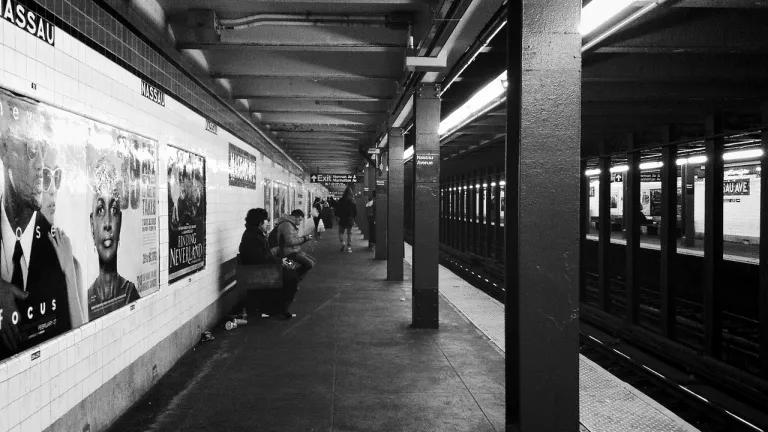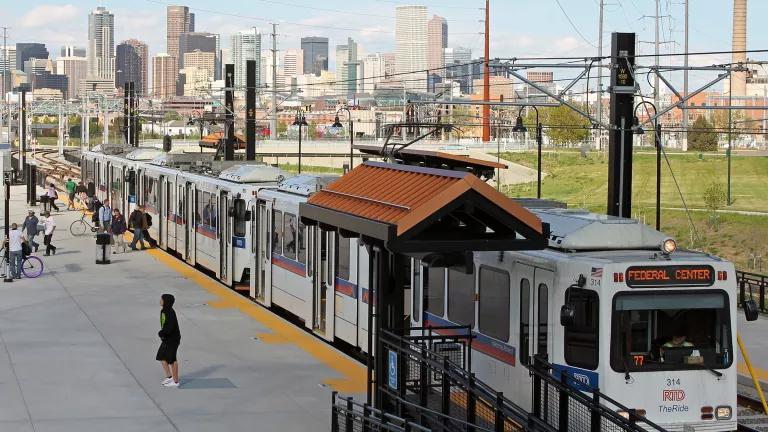A Way to Move New York Forward

New York Gov. Andrew Cuomo is set January 3 to formally unveil his agenda for 2018 and he’s almost certain to touch on the dire need to invest in the public transportation system that has long been New York City’s lifeblood and great equalizer. There is now overwhelming consensus that the city’s famous subway system is showing its age due to the neglect of the past 20+ years.
But what you may not know is there is also broad agreement on what to do about it—and not just public transit, but the entire massive and strained-to-the-breaking-point transportation hub of the greater New York City area.
A coalition of citizens, advocates, planners, political leaders, auto and truck clubs, labor unions and others—including NRDC—is behind the Move New York Fair Plan, a congestion pricing proposal backers say is “the only plausible and progressive solution for NYC’s transit and traffic.” We’re calling on the statehouse—particularly new Assembly Speaker Carl Heastie and Senate Majority Leader John Flanagan—to join us.
It may have a wonky name, but congestion pricing is really just a commonsense supply-and-demand payment system for using congested roads at peak periods. It’s the idea that roads and highways are utilities that have a different cost depending on how much—at a given time—you value getting somewhere at a reliable speed.
The end result will mean increased access to public transportation in neighborhoods that currently lack it, more balanced tolls for bridges and tunnels (including lowering some of the most expensive ones), and asking vehicles that use our roadways more to take on a larger share of the cost. It would also help support much-needed improvements and an expansion of the subway system.
Other global cities like London, Singapore, Milan and Stockholm have implemented congestion pricing with great success, lowering traffic jams and the number of cars on the road in general, creating new revenues for public transit, dramatically reducing greenhouse gas emissions and measurably improving the health and well-being of their residents. In the United States, the Southern California region is also considering a plan like this, given that residents there lose an average of more than 100 hours to traffic per year, more than any other urban area in America.
New York, as residents are quick to tell you, is different, so it needs a plan specifically suited to its needs, and one that lives up to its reputation as a city where everyone has an equal shot.
The current system connecting five boroughs and 20 million people, via roads, bridges, tunnels, trains and buses is outdated and foundering, with clogged roads, crowded and delayed subways and limited transit options in some areas making travel inefficient, aggravating, unsafe and unfair in time and cost. While some bridges remain toll-free, for example, others have been hit with seven fare and toll hikes in the last 12 years—resulting in an imbalance in distribution of the costs. And as traffic increases, so do crashes and respiratory illnesses due to carbon pollution, especially in neighborhoods near interchanges and detours for avoiding tollways.
That’s why the changes in the Move New York Fair proposal would:
- Include a “cordon” styled congestion charging zone. While this adds charges on the East River bridges and across 60th Street, that is balanced by significantly lowering tolls on the MTA’s seven bridges. Vehicles would also pay to enter the more-congested Central Business District (CBD) and there would be a surcharge on for-hire vehicles within a “taxi zone” (Manhattan south of 96th Street).
- Raise substantial revenue ($1 billion+ annually) to urgently repair, maintain, upgrade and expand the city’s mass transit system
- Reduce traffic congestion by a minimum of 15%, with traffic in the CBD moving up to 20 percent faster
- Expand transit access, which includes affordability, to those living in so-called "transit deserts" and to low-income New Yorkers
By reducing tolls on outer bridges and introducing a toll to cross into Manhattan south of Central Park, “everyone contributes something and everyone gets something in return,” a Move NY video explains. Commercial vehicles would be able to make more service and delivery calls each day, paying only one round trip toll, and rapid transit services would be expanded with citywide discounts on express buses and commuter rail.
It’s also estimated that 30,000 new and recurring local jobs will be created to repair and improve roads and bridges and modernize the transit system with smart-card payment systems and state-of-the art signaling systems so trains come more often and are less crowded.
This plan allows New York to move forward with a plan that is demonstrably fair and equitable. Governor Cuomo has signaled his support for congestion pricing as Albany prepares for its upcoming budget session, and Mayor Bill de Blasio should, too.
New York’s transportation system is what helped make it one of the great cities on Earth. As Eric McClure, executive director of StreetsPAC, put it, the city is now “in danger of losing its primacy among world cities” because of its struggling transit system and traffic congestion crisis.
No self-respecting New Yorker wants to watch that happen.


